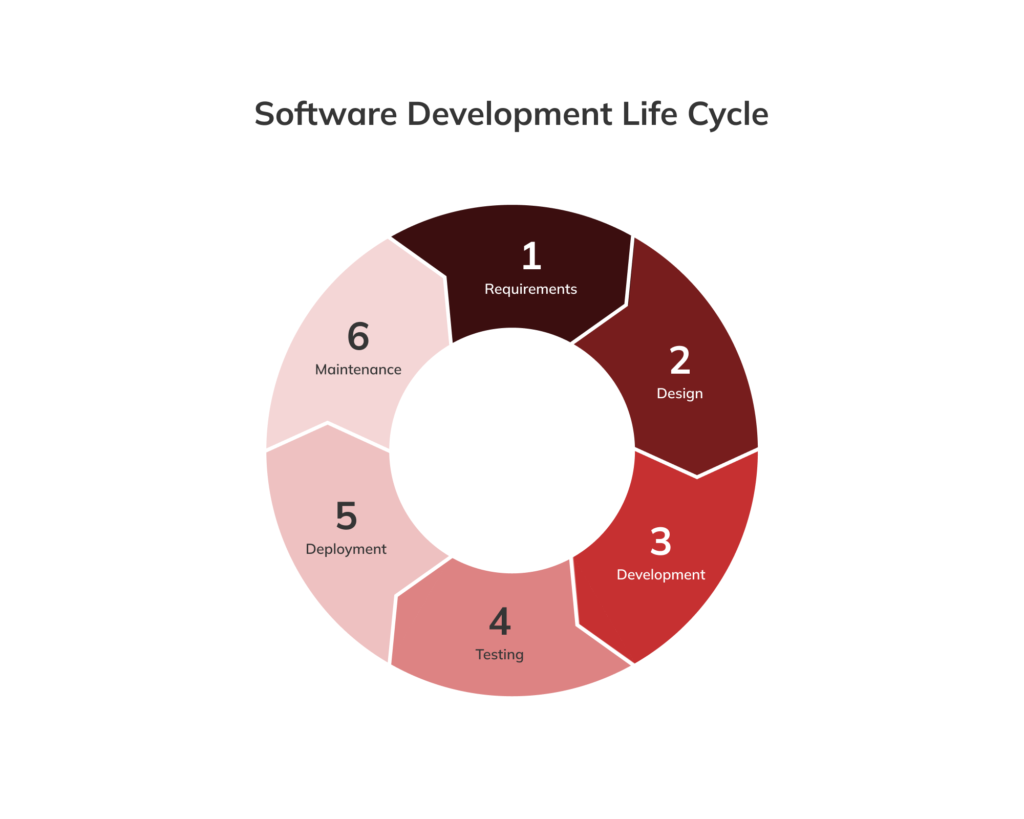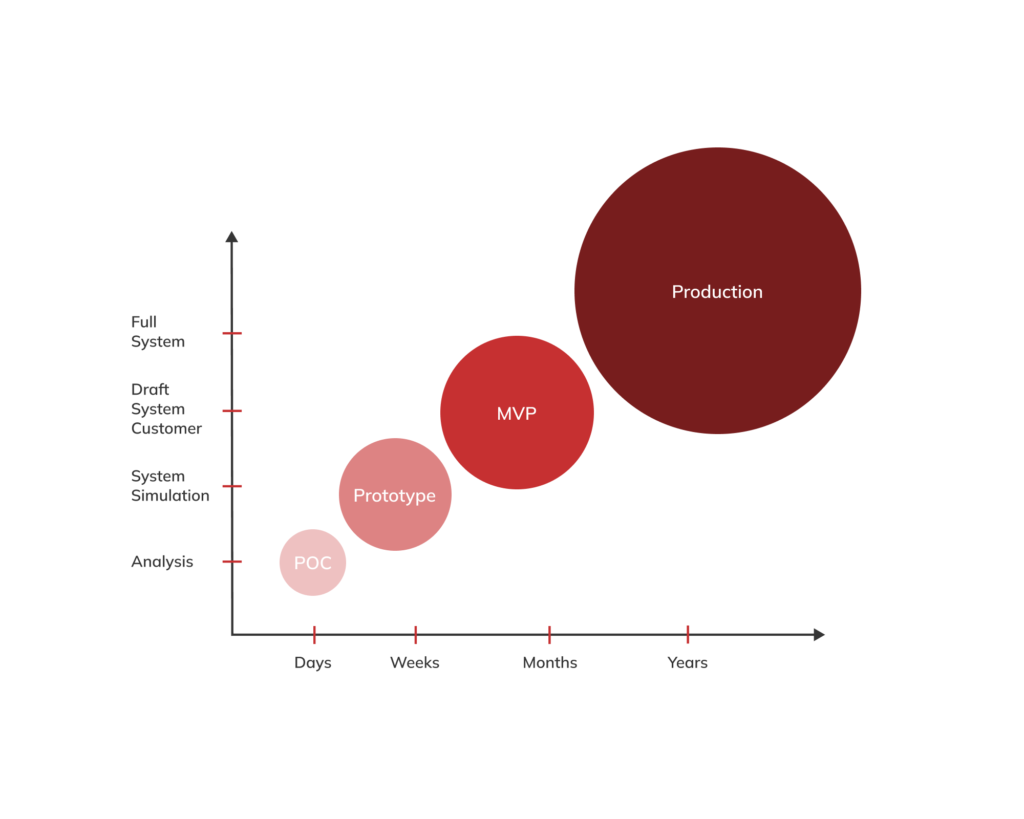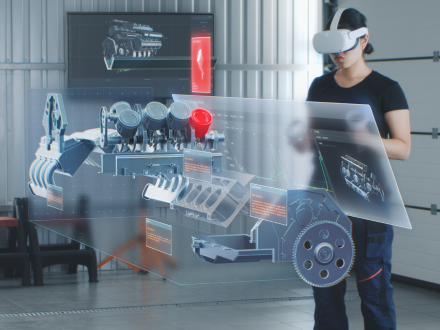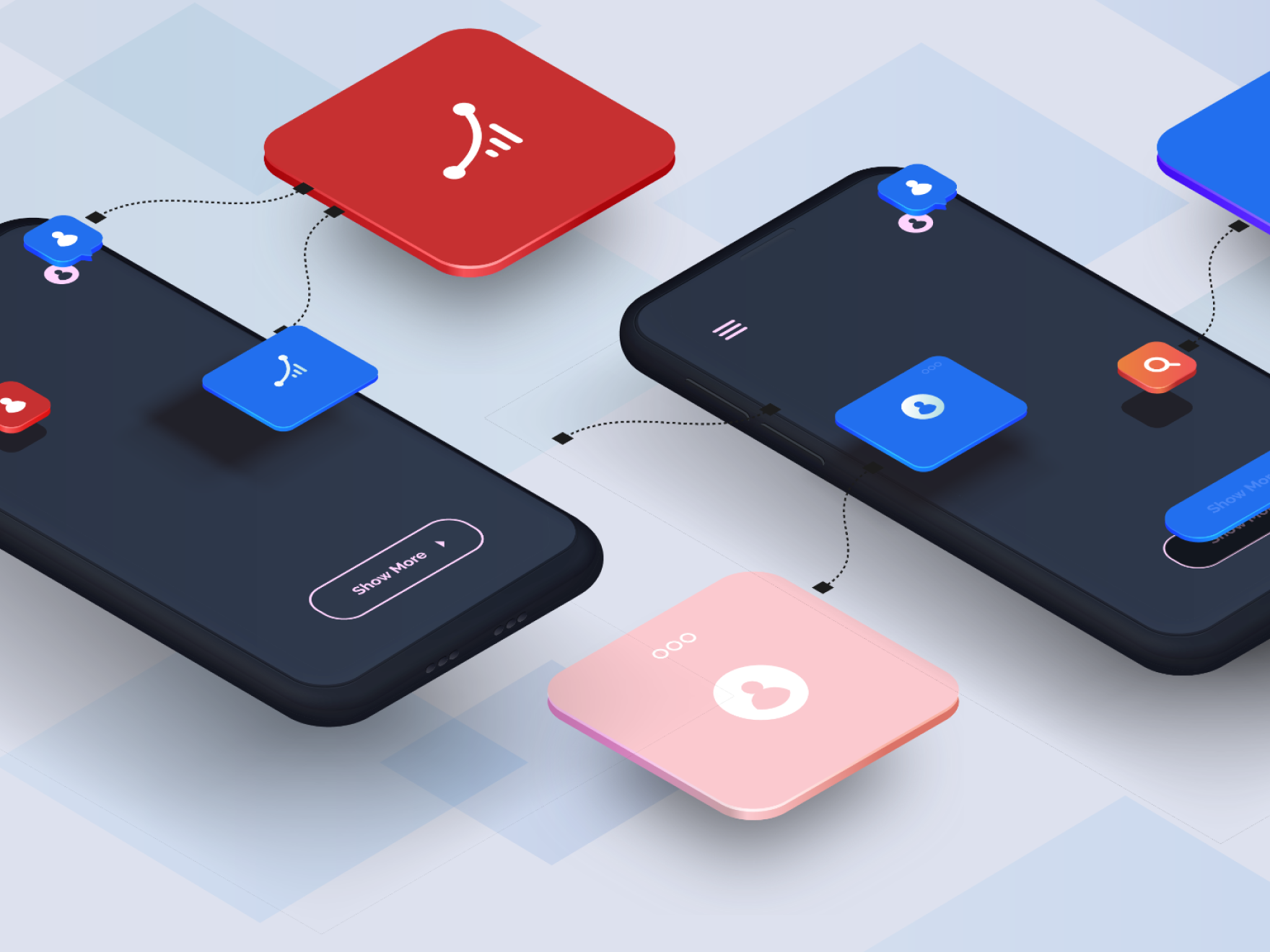Software development life cycle phases
Requirements elicitation
At this stage, the software development team evaluates the project’s feasibility to attain the customer’s objectives and determine tech requirements for the product.Design and Prototyping
Here, the specialists define the future vision of the product and create a full-fledged prototype with core features.Software Development
Obviously, this is the cornerstone of the process where developers transform requirements into accessible code.Testing
QA engineers test the software, finding errors and vulnerabilities to eliminate them both in the initial and testing stages.
Deployment
By completing this stage, the product is ready for launching and filling the market niche.
Maintenance
Finally, deployed software should be continuously and regularly updated to execute functions properly.
During the second stage of SDLC, the team usually presents a Proof of Concept (POC) – a document that validates the feasibility of the product or a particular feature. It indicates the obstacles to development and measures to bypass them together with a justification of the concept’s viability. Conducting POC for startups is particularly important since investing money in a project with tangible risks of failure can be a financial disaster for a small business. Accurate, flawless proof of concept for the business is a trustworthy base to grasp its usefulness and potential commercial effect for customers at the early stage.
The prototype is presented following the development of the POC. As these two definitions are often unjustifiably lumped together, a minor distinction between the POC and the prototype is worth explaining. The POC is described as a concise outline of a concept, or a draft idea, while a prototype is a visual implementation of POC. It is a rough model displaying key design components to represent the developing product (e.g. clickable mockup).
MVP (A Minimum Viable Product) is an early product version containing all the core functionalities. While the prototype is handled only by the project team, MVP is not a feature-bare but a usable polished model that can be launched onto the market. Further, stakeholders and investors can receive user feedback on an MVP to determine which features should be improved and what functionality should be added.
Helping with product ownership
As for Innowise, we adhere to Agile methodology to leverage best-fitted turnkey solutions for startups. While using this approach, a Product Owner plays the role of a mediator between the project team and the client, ensuring a permanent exchange of information and the overall project’s outcome. From our perspective, the Scrum model looks the most effective since it provides an iterative approach, permanent customer-vendor interaction, and high development speed. The scope of work is divided into 2-4 week sprints to split a large task into smaller subtasks and make alterations if needed.
Building a software development team requires understanding the roles and responsibilities of each member that participates in the development process. Commonly, a team usually consists of a Project Manager, Business Analyst, Technical Lead, Software Engineers, UI/ UX Designers, and QA specialists. The roles of PMs and BAs in startups are especially important since they provide overall business vision and troubleshoot issues arising during the development process.
Choosing the right tech stack
Tech stack selection is key to developing a product that meets the market niche and fulfills the established goals. Failing to do so can become a threat, putting an end to the project’s feasibility. Choose the number of tools that covers the server side (back-end) and client interfaces (front-end), databases, cloud, etc., comprehensively, and do not hesitate to consult tech experts if needed.
Benefits of working with Innowise
Culture, mindset & ownership
Our vetted experts and specialists always go the extra mile to create outstanding solutions, not just complete tasks. They invest not only in knowledge and skills but personal attitude and determination to foster custom software development for startups.
Flexibility & transparency
Our project team communicates with clients, staying tuned with customers’ ideas, thoughts, and suggestions. Our philosophy is to learn and improve from each collaboration, staying transparent and open-minded.
Passionate & reliable team
We deliver a level of commitment and trust that is highly appreciated by our customers, as 93% of them come back with new challenges to cope with.
Partnership instead of a typical client-agency relationship
We adhere to the individual approach, putting ourselves in the shoes of the people we’re creating solutions for. Our teams are deeply involved in the development process, accepting the client’s successes and failures as their own.
Innowise Software Development Process


























